#Greek and Roman deities
Explore tagged Tumblr posts
Text
My paired down list of spirit work and death magic. (Obviously this is what works for me and I'm kind of a picky person when I aquire written work)
Physical Media:

Cunning Words: A Grimoire of Tales and Magic by Marshall WSL (This one I pre-ordered and haven't gotten through the whole text but it's a good read. It incorporates the art of story telling with distinct spells and magic. I think it's very unique but I wouldn't recommend it unless you want something with flavor)
Riding the Bones by the three little sisters (this one is an anthology of particular practices from different walks of life pertaining to death and transition. I've only read a few of the stories but for what it's worth I think its good insight)
Botanical Curses and Poisons by Fez Inkwright (I only list this because it's always good to know what's good and bad for you. Know what can kill you and you can probably avoid it)
The Bones Fall in A Spiral by Mortellus (again I've mentioned this before but I think this is a good work for someone getting into the field and needs someone that's direct and experienced in what they do. One of my favorites.
Consorting with Spirits by Jason Miller (I feel like this is a staple of the craft and while I personally don't connect with the material it works and it has some good points)
Metamorphosis by Ovid (I think it's always necessary to deal with primary texts. Go with the classics. Ovid has a beautiful way of writing and you get to really understand the stories and myths that spirits of the dead living etc are connected to and if you do any deity work I highly recommend it.)
Of Blood and Bone by Kate Freuler (I have mixed views on this one. some of the stuff is informative and it provides some good spells, but it lacks transparency and depth. I find Mortellus book far more student minded.)
The complete language of flowers by S. Theresa Dietz (if you work with the dead, deities, spirits or hey plant spirits. Chances are you've come across Victorian flower language. I use this book as a reference guide for symbolism/folklore/ and as a way to connecting with spirits)
Encyclopedia of Spirits by Judika Illes (hey no library is complete without an encyclopedia. I personally like this one because it's very indepth without being too overwhelming. Not sure where to go? Just pick up this book and you can do more indepth research later. It's what it's there for. Reference guides are one of my favorites.)
Okay that's it for my physical media.
I also have a list of digital copies I keep.
Morbid Magic by Tomàs Prower (I think if you buy any book from this collection buy this one. It gives you an over all guide of most death practices around the world)
Historical:
Death, Dissection and the Destitute by Ruth Richardson
The Work of the Dead by Thomas W. Laqueur.
(I list these because they are a good source guide to how we treated the dead and spirits in the past. It's always important we learn from those that came before us.)
Greek Customs: (if you're going to do any type of work with Greek chthonic deities I suggest these three articles/books. I'm not saying its mandatory but these are very helpful guides to understanding ancient thought and how to bring them into today.)
Burial Customs, The Afterlife and the Pollution of Death in ancient Greece by Francois Pieter Retief and Louise Cilliers (free on research gate)
Underworld Gods in Ancient Greek Religion Death and Reciprocity by Ellie Mackin Roberts
Inner Purity and Pollution in Greek Religion Volume 1 by Andrej Petrovic and Ivana Petrovic (this one's my personal favorite)
#i put this up in a server but thought id list my opinions to the public#witchblr#death magic#spirit work#greek and roman deities#deity work#library#its ecclectic that's for sure#but i didnt want to go in depth with specifics idk#anyone want to add to the list feel free#id love a discussion or something#i left out all of Caitlin Doughty's books because this person wasnt really asking about mortuary science in particular#but its what keeps the practice alive my man#i feel like this doesnt have to be stated but dont go where youre not allowed#theres a reason there are closed practices and things like that#idk man if theres a building and it says do not enter i just walk away
25 notes
·
View notes
Text
"Unveiling the Mystique of Antiquity: A Journey Through 'The Myths and Legends of Ancient Greece and Rome' by E. M. Berens"

In the realm of classical mythology, E. M. Berens' "The Myths and Legends of Ancient Greece and Rome" stands as a venerable guide, beckoning readers into the enchanting tapestry of gods, heroes, and timeless tales. As I embarked on this literary odyssey, I found myself captivated by the author's adept storytelling and his ability to breathe life into the ancient narratives, making them accessible and engaging for a contemporary audience.
Berens' comprehensive exploration begins with the origins of the Greek and Roman pantheons, tracing the lineage of deities and the epic events that shaped their divine realms. The book then unfurls a rich tableau of myths, ranging from the birth of the cosmos to the heroic exploits of figures like Hercules, Perseus, and Odysseus. Each narrative is meticulously crafted, with Berens providing insightful commentary that delves into the symbolic and cultural significance of these tales.
What sets Berens' work apart is his knack for blending academic rigor with a storyteller's flair. He navigates the intricate genealogies and complex relationships of the gods with clarity, ensuring that readers, whether well-versed in classical mythology or newcomers to the subject, can easily follow the intricate narratives. The prose is eloquent, evoking the grandeur of ancient civilizations while maintaining a modern accessibility that makes the myths feel vibrant and relevant.
One of the standout features of the book is Berens' meticulous attention to detail. He not only recounts the well-known myths but also unearths lesser-known stories, providing a holistic view of the ancient mythological landscape. The inclusion of lesser-known tales adds depth to the reader's understanding, creating a nuanced portrayal of the diverse characters and themes that populate the classical mythos.
"The Myths and Legends of Ancient Greece and Rome" also serves as a valuable cultural resource, shedding light on the moral and philosophical underpinnings of these ancient societies. Berens explores how these myths were interwoven into the fabric of daily life, shaping religious practices, artistic expressions, and even political ideologies. This contextualization enriches the reader's appreciation for the enduring impact of classical mythology on Western culture.
While Berens' work is undoubtedly a comprehensive and illuminating resource, it is not without its limitations. The book, originally published in the late 19th century, reflects the perspectives and biases of its time. Some readers may find aspects of the text to be outdated or culturally insensitive. Additionally, the absence of in-depth analysis or critical engagement with the source material may leave scholars wanting more scholarly depth.
In conclusion, "The Myths and Legends of Ancient Greece and Rome" by E. M. Berens is a captivating journey through the timeless narratives of classical mythology. Berens' storytelling prowess, coupled with his dedication to presenting a comprehensive overview, makes this book a valuable companion for anyone seeking to explore the rich tapestry of ancient Greek and Roman myths. The author's ability to strike a balance between academic rigor and engaging storytelling ensures that this work remains an enduring classic in the realm of mythological literature.
E. M. Berens' "The Myths and Legends of Ancient Greece and Rome is available in Amazon in paperback 16.99$ and hardcover 23.99$ editions.
Number of pages: 422
Language: English
Rating: 9/10
Link of the book!
Review By: King's Cat
#Ancient Greek mythology#Roman mythology#Classical legends#Mythological pantheon#Gods and goddesses#Heroes and heroines#Mythical narratives#Epic tales#Greek and Roman deities#Mythological stories#Berens' mythology#Ancient epics#Mythical characters#Classical literature#E. M. Berens myths#Mythological retellings#Legendary adventures#Divine genealogies#Classical civilization#Mythological symbolism#Cultural significance#Moral themes#Philosophical concepts#Mythological interpretations#19th-century literature#Ancient cosmogony#Mythical creatures#Heroic exploits#Classical deities#Greek and Roman folklore
6 notes
·
View notes
Text
"Unveiling the Mystique of Antiquity: A Journey Through 'The Myths and Legends of Ancient Greece and Rome' by E. M. Berens"
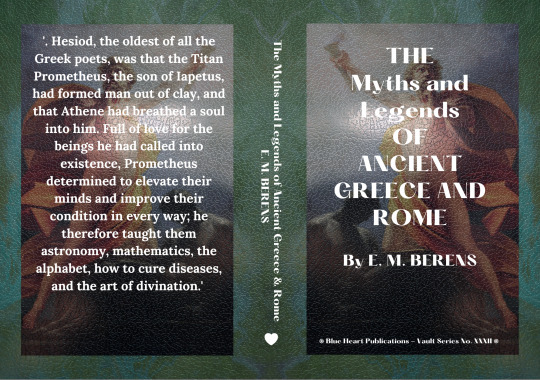
In the realm of classical mythology, E. M. Berens' "The Myths and Legends of Ancient Greece and Rome" stands as a venerable guide, beckoning readers into the enchanting tapestry of gods, heroes, and timeless tales. As I embarked on this literary odyssey, I found myself captivated by the author's adept storytelling and his ability to breathe life into the ancient narratives, making them accessible and engaging for a contemporary audience.
Berens' comprehensive exploration begins with the origins of the Greek and Roman pantheons, tracing the lineage of deities and the epic events that shaped their divine realms. The book then unfurls a rich tableau of myths, ranging from the birth of the cosmos to the heroic exploits of figures like Hercules, Perseus, and Odysseus. Each narrative is meticulously crafted, with Berens providing insightful commentary that delves into the symbolic and cultural significance of these tales.
What sets Berens' work apart is his knack for blending academic rigor with a storyteller's flair. He navigates the intricate genealogies and complex relationships of the gods with clarity, ensuring that readers, whether well-versed in classical mythology or newcomers to the subject, can easily follow the intricate narratives. The prose is eloquent, evoking the grandeur of ancient civilizations while maintaining a modern accessibility that makes the myths feel vibrant and relevant.
One of the standout features of the book is Berens' meticulous attention to detail. He not only recounts the well-known myths but also unearths lesser-known stories, providing a holistic view of the ancient mythological landscape. The inclusion of lesser-known tales adds depth to the reader's understanding, creating a nuanced portrayal of the diverse characters and themes that populate the classical mythos.
"The Myths and Legends of Ancient Greece and Rome" also serves as a valuable cultural resource, shedding light on the moral and philosophical underpinnings of these ancient societies. Berens explores how these myths were interwoven into the fabric of daily life, shaping religious practices, artistic expressions, and even political ideologies. This contextualization enriches the reader's appreciation for the enduring impact of classical mythology on Western culture.
While Berens' work is undoubtedly a comprehensive and illuminating resource, it is not without its limitations. The book, originally published in the late 19th century, reflects the perspectives and biases of its time. Some readers may find aspects of the text to be outdated or culturally insensitive. Additionally, the absence of in-depth analysis or critical engagement with the source material may leave scholars wanting more scholarly depth.
In conclusion, "The Myths and Legends of Ancient Greece and Rome" by E. M. Berens is a captivating journey through the timeless narratives of classical mythology. Berens' storytelling prowess, coupled with his dedication to presenting a comprehensive overview, makes this book a valuable companion for anyone seeking to explore the rich tapestry of ancient Greek and Roman myths. The author's ability to strike a balance between academic rigor and engaging storytelling ensures that this work remains an enduring classic in the realm of mythological literature.
E. M. Berens' "The Myths and Legends of Ancient Greece and Rome is available in Amazon in paperback 16.99$ and hardcover 23.99$ editions.
Number of pages: 422
Language: English
Rating: 9/10
Link of the book!
Review By: King's Cat
#Ancient Greek mythology#Roman mythology#Classical legends#Mythological pantheon#Gods and goddesses#Heroes and heroines#Mythical narratives#Epic tales#Greek and Roman deities#Mythological stories#Berens' mythology#Ancient epics#Mythical characters#Classical literature#E. M. Berens myths#Mythological retellings#Legendary adventures#Divine genealogies#Classical civilization#Mythological symbolism#Cultural significance#Moral themes#Philosophical concepts#Mythological interpretations#19th-century literature#Ancient cosmogony#Mythical creatures#Heroic exploits#Classical deities#Greek and Roman folklore
0 notes
Text

or like arts and crafts or something
#greek gods#greek mythology#hellenic deities#hellenic pagan#hellenic polytheism#hellenic worship#hellenism#helpol#hermes#paganism#thoth#the emerald tablet#hermeticism#lord hermes#rome#the roman empire#history#gnosticism#karl marx
984 notes
·
View notes
Text

Apollo and Diana, an 1848 marble statue by American artist and sculptor Thomas Crawford.
This captures their essence quite well imo!
#artemis#goddess artemis#goddess diana#marble statue#marble sculpture#apollo#apollon deity#god apollo#greek gods#greek mythology#ancient greek#greek history#roman mythology#roman gods#roman history#rome#spqr#Thomas Crawford#Diana#theoi
517 notes
·
View notes
Text
heyybesties. so ive been looking into ancient greek lore recently (mostly for hermes) and. the transition from chiton wearing bearded messenger hermes to athletic, chlamys wearing twink hermes is extremely funny to me i had no idea he used to look like that.

anyway hermes looked especially cunty in that second image i wanted to redraw him with my own design but his chlamys is covering his hips too much you cant really tell :(

#hermes#greek mythology#greek gods#greek myth#hermes deity#hermes art#hellenic polytheism#ancient greece#mercury#his wings are based off rooster wings btw#bc they're one of his symbols#also the colours are based on the planet mercury#i.e. his roman counterpart#zeus#hes here too ig
324 notes
·
View notes
Text

Apollo kills Python by Virgil Solis for Ovid's Metamorphoses, Book I
#virgil solis#art#apollo#python#greek mythology#gods#bow#arrow#arrows#ancient greece#ancient greek#roman mythology#europe#european#serpent#dragon#dragons#serpents#beasts#monsters#mythical creatures#mythical beasts#religious art#religion#delphi#classical antiquity#deities#deity
94 notes
·
View notes
Text
To give the gods and deities offerings, do they see us as we see crows bringing them shiny things?
#hellenic deities#deity work#deity worship#apollo deity#hermes deity#hypnos deity#aphrodite deity#loki deity#greek deities#norse deities#gods and deities#celtic deities#pagan deities#hindu deities#thracian deities and beliefs#roman deities
341 notes
·
View notes
Text
Fun fact: Unlike most other ancient pantheons, the Nordic Gods have exactly zero instances of direct familial incest

#nonask#denmark#admiralen#fact#nordic gods#norse gods#norse is an antiquated term that should not be used#but the rest of the world hasnt really discovered that so im putting it in the tags#anyway#shoutout to the following:#ancient greek gods#lookin at you zeus#ancient egyptian gods#ancient kemet#most of the old roman gods also#sumerian gods#babylonian gods#all of the mesopotamian deities basically#also i believe ancient chinese gods#and ancient japanese gods most definitely#i mean most of them didnt have much choice true#but some of them DID have options#they just chose not to make use of them#so good work nordic gods for keeping up that genetic diversity
233 notes
·
View notes
Text
I’m sick of having to censor my language and beliefs in order to save face in my community. I am polytheistic. I am pagan. I believe in many gods. I worship many gods. I speak to the gods and they speak back. I can hear them. I can see them. I have conversations with them. I believe in faeries. I have faeries that are my friends and live in my house. I give them offerings and they help with the chores. They also take my things and play other practical pranks, just like the old stories said. I know their names. I speak to them and they speak back. I believe in ghosts and spirits. I grew up in a haunted house. I’m psychic. I can speak to the dead. I have spoken to both living and dead animals. I’m superstitious. I find comfort in old wives tales. I am spiritually powerful. I will speak my truth, even if it makes me yet another witch on the outskirts. So be it. That is my destiny.
Khairete.
#pagan#paganism#hellenic deities#hellenic devotion#hellenic pagan#hellenism#hellenic polythiest#hellenic community#hellenic gods#witch#pagan witch#witchblr#witchcraft#faeries#I believe in fairies#fairies#fairy tales#superstitious#superstitious beliefs#embrace superstition#polytheist#hellenic polytheism#polytheism#roman pantheon#roman deities#greek gods#hellenic worship#hellenic paganism#psychic#i am psychic
189 notes
·
View notes
Text
𓆉⋆。˚⋆❀ Goddess Worship: An Introduction of Venus 🐚🫧𓇼 ˖°

Note: Day 21 of our October calendar! Today we have an introduction of deities I work with/worship. This post is to provide some information about the deities but also how I work with them personally. Everyone has their own methods with the Gods, and you should do whatever feels right with you while also respecting the bases of the religions.
─── ⋆⋅☆⋅⋆ ───── ⋆⋅☆⋅⋆ ───── ⋆⋅☆⋅⋆ ───── ⋆⋅☆⋅⋆
Historical Background:
Venus is the Roman goddess of love, beauty, desire, and fertility, whose origins lie in the Greek goddess Aphrodite (they are basically the same deity but one can have a preference for one or another when it comes in terms of naming. I personally like Venus denomeation better than Aphrodite, yet Aphrodite's cult is older and thus more accurate when it comes to history). She played a major role in Roman culture, not just as a goddess of romantic love but also as a symbol of the prosperity and power of the Roman state. Julius Caesar claimed to be a descedent from Venus through her son Aeneas, who was a Trojan hero and a central figure in Roman myth. You can find a vast historical symbols and lore with Venus. Out of the three goddess that I work with (Venus, Freyja and Hekate) she is the most well represented through art, literature, historical history and mythology.

Attributes and Symbols:
Doves and Sparrows: they are birds sacred to Venus, representing love and desire but also innocence and purity. These birds often accompany her in art as a part of her symbolism. Shells and Pearls: Venus is famously depicted emerging from the sea on a shell, symbolizing her birth from sea foam. Anything directly linked with the sea can be symbolic in her name Roses and Myrtle: Both flowers are sacred to Venus, representing love, beauty, and fertility. Golden Apples: Associated with the goddess, these were the prize in the famous myth of the Judgment of Paris, where Venus was deemed the fairest of all. Other red fruits can also be associated with her, anything that holds a connotation of love and desire. (The apples are also an association with Eve and the forbidden fruit)

Worship and Rituals:
Veneralia: A festival held in honor of Venus Verticordia (Venus the Changer of Hearts) on April 1st. This festival was primarily concerned with cleansing rituals, bathing in myrtle-laden water, and offering prayers for purity in love and relationships. Venus Genetrix: A title meaning "Mother Venus," this aspect emphasized Venus’s role as a progenitor of the Roman people through Aeneas. Julius Caesar established a temple in her honor as Venus Genetrix, showing her importance in Roman political and public life. Gardens and Shrines: Venus had many shrines and temples, particularly in Rome. Shrines to Venus often included lush gardens, which were a symbol of her fertility and life-giving powers. This is also an idea to set al whole altar/shrine for her, that doesn't need to be inside of home and can be creative with your outside space. Erotic and Fertility Rites: Venus was invoked in matters of love, sex, and fertility. Offerings of flowers, perfume, and wine were common, and her blessings were sought by women who wished to conceive. Pretty much like Freyja, people would have sexual intercourse in her honor State Worship: Venus was integral to the Roman state religion. Augustus, following Caesar’s example, elevated her status, linking her to the success of the empire and military victories. Any "birth" was dedicated to her

-> When worshipping Venus, you can make a pretty altar while respecting her symbolisms. Venus can help with love, but remember she helps with self love first as well. Do not invoke her only to have X falling in love with you. her cult needs to be taken seriously. Offerings need to be maid every friday and during her ritual days. Never use her power to become "the prettiest of them all", as Venus doesn't take well humans who try to use her name for pettiness. Be grateful for her, shower her in love and admiration and she will bless you in return
-> Ideas for offerings: Wine, honey, shells, feathers, mirrors, roses, myrtle, perals, jewlery, perfume, incense, scented candles, hairbrushes or makeup, apples, red fruits, sea water or sand, anything symbolic with the sea and love.

BIBLIOGRAPHY:
"Venus in Rome: A Translation of Book II of Ovid's Fasti" by Ovid, Translated by Betty Rose Nagle
"Venus Genetrix: Political Imagery and Female Personifications in the Late Republic" by Paul Zanker
Carney, J. (2013). Venus in Augustan Rome (Doctoral dissertation, Florida Atlantic University).
Flory, M. B. (1988). Pearls for Venus. Historia: Zeitschrift für Alte Geschichte, (H. 4), 498-504.
#venus#venus astrology#roman#roman mythology#roman gods#venus goddess#venus cult#venus deity#aphrodite#greek gods#deities#greek deities#hellenic deities#gods and deities#deity work#paganism#deity worship#polytheism
111 notes
·
View notes
Text
Thinking very much about Aeneas today

And Mitski 🤭
#greek myth art#aphrodite#the aeneid#aeneas#greek gods#greek mythology#trojan war#epic the musical#song of achilles#epic the troy saga#greek deities#olympian gods#olympus#troy#artists on tumblr#new artist#demigods#pjo#class of 2013#mitski#Virgil#roman mythology#classical mythology
64 notes
·
View notes
Text
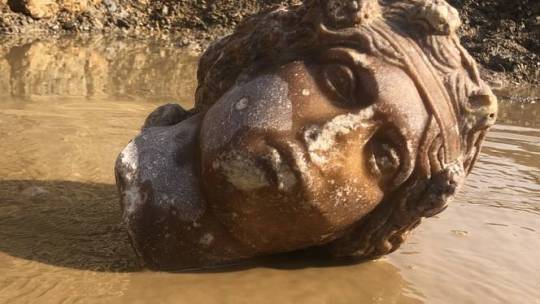
Turkish Archaeologists Unearth Sculpted Heads of Ancient Greek Deities
The excavations in Kutahya province’s ancient city of Aizanoi, which is the site of many ancient Greek and Roman-era settlements, discover the statue heads of Dionysus and Aphrodite.
Turkish archaeologists have discovered more sculpted heads of ancient Greek deities during excavations in Türkiye's western Kutahya province.
The statue head of Aphrodite, known as the goddess of love and beauty in Greek mythology, and the statue head of Dionysus, the deity of wine, were discovered during excavation work in an ancient city in central Türkiye.
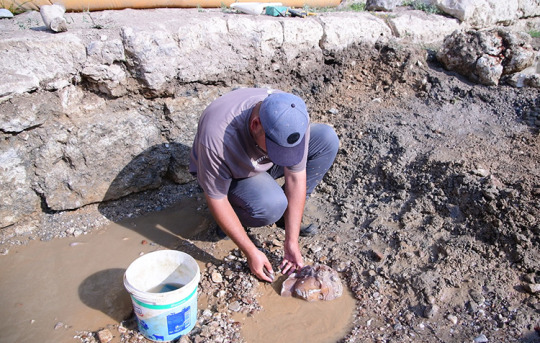
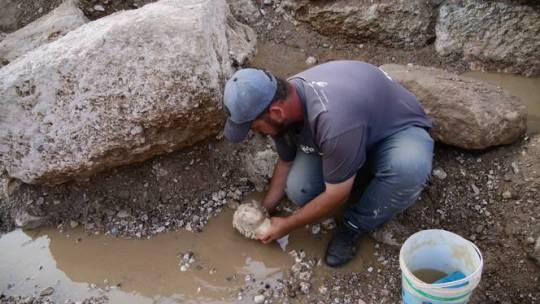
Modern Türkiye is the site of many ancient Greek and Roman-era settlements.
With a history dating back 5,000 years, Aizanoi, situated 50 kilometres (31 miles) from the Kutahya city centre, was included in the UNESCO World Heritage Tentative List in 2012.
Archaeological excavations are currently underway in Aizanoi, which is located in the Cavdarhisar district of Kutahya province and is home to Anatolia's best-preserved Temple of Zeus.
Archaeology professor and excavation team leader Gokhan Coskun told Anadolu Agency that numerous statue pieces were discovered during the excavation.
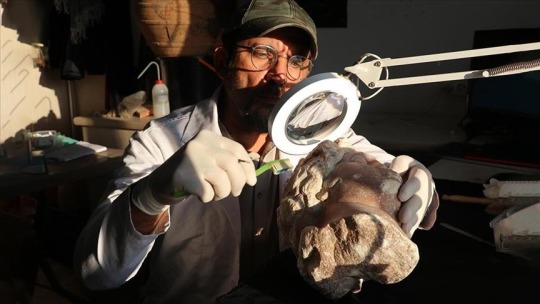
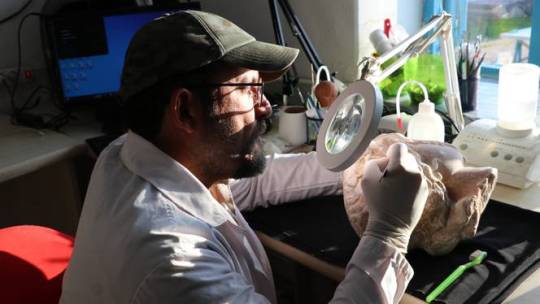
"The most exciting development for us this season is uncovering new heads of the goddess of love and beauty, Aphrodite, and the deity of wine Dionysus," Coskun said.
"In the excavation works we have conducted in the region so far, we have unearthed more than 100 statue pieces. Some of the heads found are from statues that are 2-3 meters long," he noted.
"These statue heads, which we first discovered three years ago, are in very well-preserved condition. During our excavations, so far we have discovered two Aphrodite and three Dionysus statue heads," Coskun said.
The excavation season, which began in the ancient city last April, will be completed by the end of this month, Coskun added.
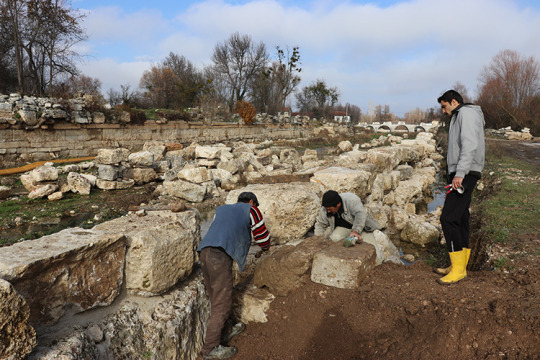

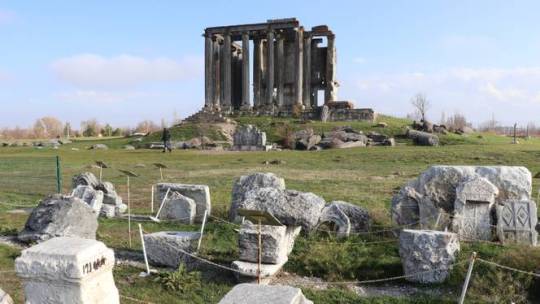
#Turkish Archaeologists Unearth Sculpted Heads of Ancient Greek Deities#ancient city of Aizanoi#Dionysus#Aphrodite#marble#marble statue#marble sculpture#marble head#ancient artifacts#archeology#archeolgst#history#history news#ancient history#ancient culture#ancient civilizations#greek history#roman history#greek art#roman art
307 notes
·
View notes
Text
puppy appreciation post

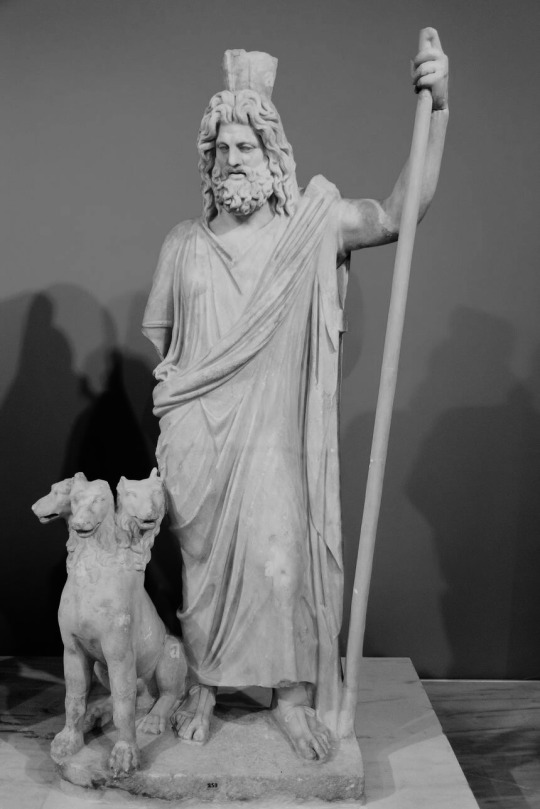

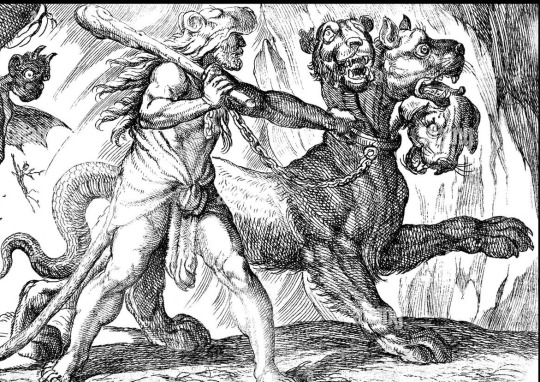
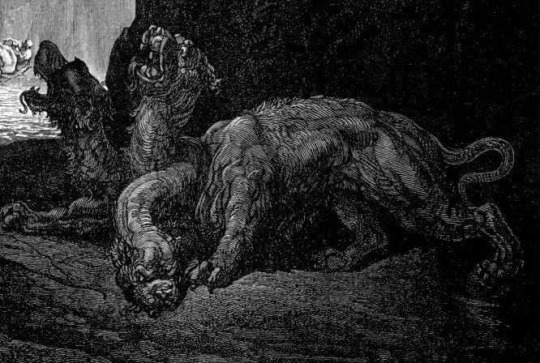
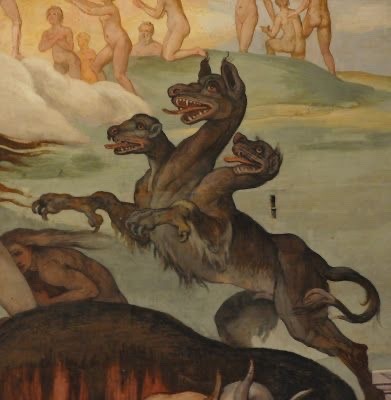
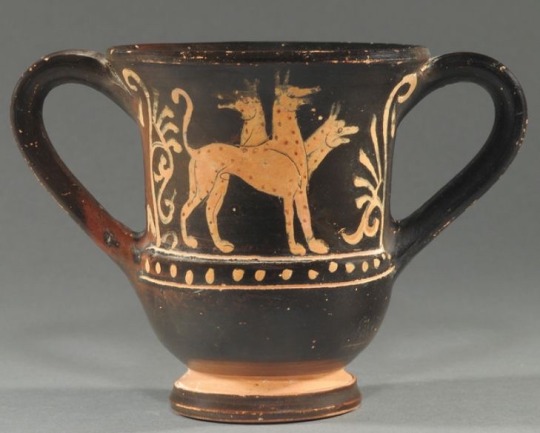

#cerberus#greek mythology#greek gods#hades deity#hades greek mythology#hades god of the underworld#hades greek god#hades god#classical mythology#roman mythology#pluto god
201 notes
·
View notes
Text

[🏺Greek Gods Series - #1✨]
🌙🏹Artemis, Goddess of the Wilderness, the Hunt and Childbirth 🦌🌲
#artemis#greek mythology#greek myth#greek gods#greek goddess#greek myth art#ancient greek#ancient greek mythology#ancient greece#diana#for the roman lovers#chibi art#chibi greek gods#greek pantheon#the 12 olympians#olympus#polytheism#hellenic polytheism#hellenic pagan#hellenic deities
180 notes
·
View notes
Text
Me when i see another post mentioning the word "Greco-Roman" , but the only "Roman" thing they include is the Roman name of the god they talked about, saying that the said god is the "Roman equivalent" of the Greek god.

#paganism#pagan#mythology#greek mythology#helpol#hellenic paganism#hellenic pagan#hellenic polytheism#hellenic deities#greek polytheism#roman paganism#roman polytheism#ancient rome#pagan community
64 notes
·
View notes